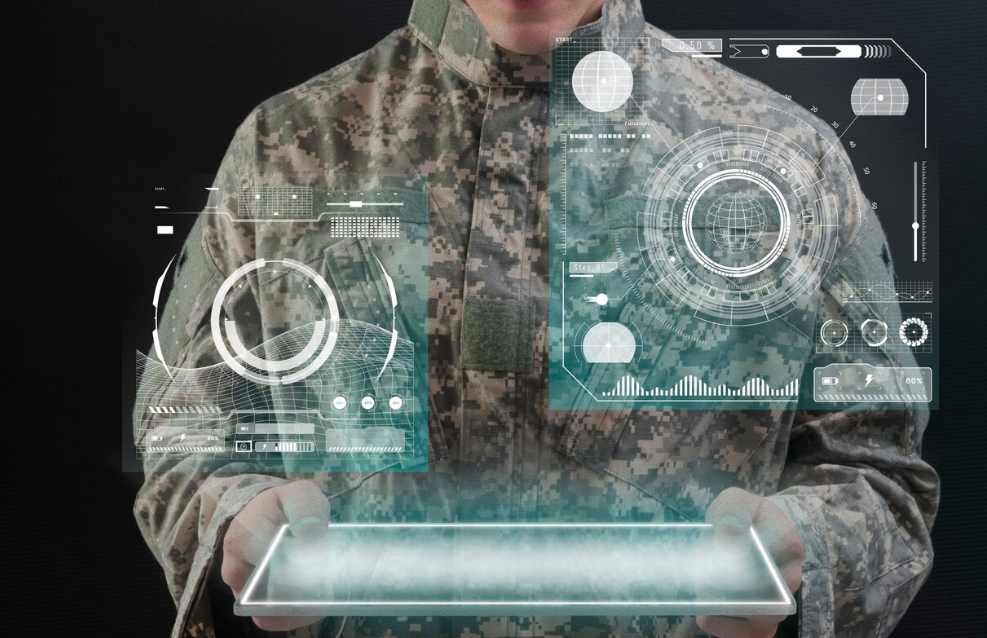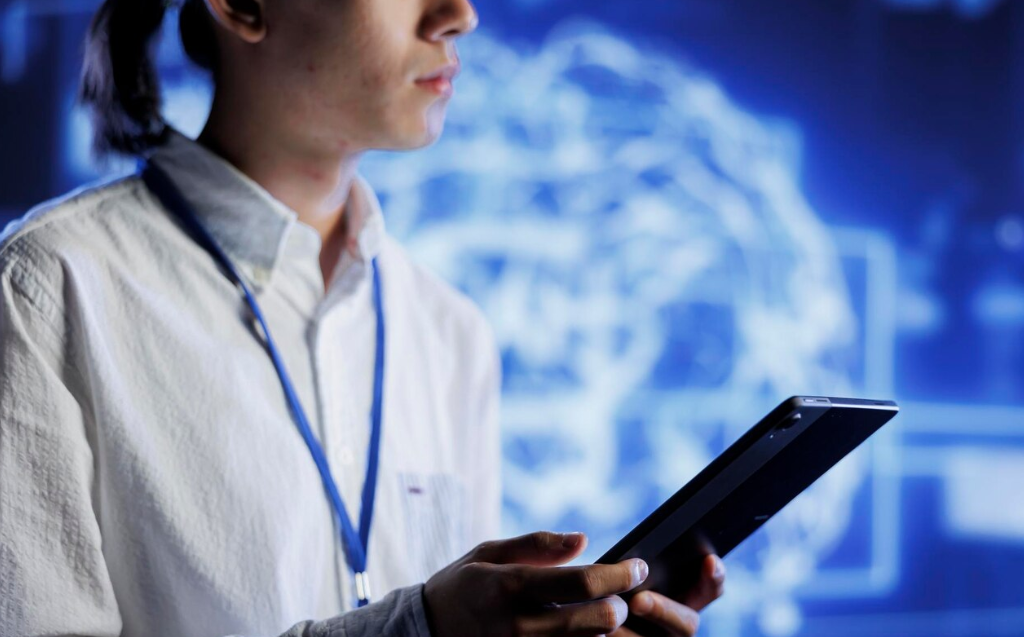The world of content creation has undergone a massive transformation in recent years, with new technologies and innovative tools reshaping how we produce, consume, and interact with creative works. One of the most exciting developments in this field is the rise of Artificial Intelligence (AI), which is increasingly being used to enhance and even revolutionize content creation across various industries.
From film production to music composition and visual arts, AI is pushing the boundaries of creativity and offering new possibilities for artists, producers, and creators. In this article, we explore the current and future role of AI in content creation, examining how it is transforming the landscape of film, music, art, and more.
AI in Film and Video Production
The film industry has always been at the forefront of adopting new technologies, from the early days of color film to the use of CGI in modern blockbusters. However, the integration of AI into filmmaking is opening up entirely new avenues for creativity, efficiency, and storytelling.
1. AI for Scriptwriting and Storytelling
Scriptwriting has long been a labor-intensive process, requiring deep creativity and expertise. AI, however, is beginning to play a role in this field by assisting writers and producers with ideas, structures, and even generating entire scripts.
- AI-driven writing tools: Platforms like ShortlyAI and Sudowrite use AI to help writers brainstorm ideas, generate dialogue, and suggest plot twists. These tools can analyze successful screenplays, learn from them, and offer suggestions that fit within established narrative structures.
- Story generation: AI systems are also capable of generating entirely new stories based on parameters set by writers. By inputting themes, genres, or character details, AI can produce plotlines, character arcs, and even dialogue. While these systems are still evolving, they provide a valuable starting point for screenwriters.
Although AI-generated scripts still require human oversight, the technology can significantly speed up the creative process and provide new ideas for filmmakers to explore.
2. AI in Video Editing and Post-Production
Video editing and post-production are critical steps in filmmaking, often involving hours of tedious work. AI is helping streamline these processes, making them more efficient and accessible.
- Automated editing: AI tools like Adobe Sensei and Magisto use machine learning algorithms to analyze raw footage, identify key scenes, and automatically create edited videos. These tools can recognize faces, objects, and emotions, making it easier to select the best takes and create cohesive narratives.
- Special effects and CGI: AI is also being used to create complex visual effects and CGI, reducing the time and cost involved in producing high-quality animations. AI algorithms can assist in rendering realistic movements, textures, and lighting in digital characters and environments.
- Deepfake technology: While controversial, deepfake technology, powered by AI, has enabled filmmakers to create hyper-realistic visual effects, such as de-aging actors or resurrecting deceased performers. Although this technology raises ethical concerns, its potential for storytelling is undeniable.
AI-powered tools in film editing and post-production are enabling filmmakers to create high-quality content with faster turnaround times and reduced costs.
3. AI for Audience Engagement and Personalization
Once a film or series is released, the next challenge is engaging audiences and creating personalized experiences. AI is being used to analyze viewer behavior and preferences to enhance the audience experience.
- Recommendation engines: Platforms like Netflix and Hulu use AI-driven algorithms to analyze viewers’ watching habits and recommend personalized content based on their preferences. These recommendation engines help users discover new films and TV shows that match their interests.
- Interactive storytelling: AI is also enabling new forms of interactive content, such as choose-your-own-adventure films and TV shows. By using AI to track viewer choices, these interactive experiences create a personalized narrative, where the storyline changes based on audience decisions.
Through these innovations, AI is not only changing how films are made but also how they are consumed, offering more immersive and customized viewing experiences.
AI in Music Production
AI’s impact on the music industry is equally profound, transforming everything from composition and production to distribution and audience engagement. Here are some ways AI is revolutionizing music creation:
1. AI-Generated Music and Composition
AI is making waves in the world of music composition, where algorithms are being used to generate original pieces of music in various genres.
- AI music composition tools: Platforms like Amper Music and Aiva use AI to compose music in a variety of styles, from classical to electronic. These tools can generate entire pieces of music based on user inputs such as mood, tempo, and genre, allowing creators to produce high-quality music with minimal effort.
- Music for films and games: AI is also being used to compose original soundtracks for movies, video games, and advertisements. By analyzing the emotional tone and pacing of scenes, AI can generate music that enhances the storytelling experience.
While AI-generated music lacks the nuanced emotional touch of human composers, it is a useful tool for music production, particularly for content creators who need royalty-free music or want to explore new musical ideas quickly.
2. AI in Music Production and Mixing
AI is also being integrated into the production and mixing stages of music creation, offering tools that help artists and producers refine their sound.
- AI-driven mastering: Tools like LANDR and iZotope Ozone use AI to automatically master tracks, optimizing audio levels, equalization, and compression. These tools are especially useful for independent musicians and small production teams who may not have access to professional mastering services.
- AI for mixing and sound design: AI can analyze individual tracks and suggest improvements in balance, panning, and effects. Additionally, AI can assist in creating unique sound effects and synthesizing new sounds, expanding the possibilities for musicians and sound designers.
These AI tools help streamline the production process, allowing musicians to focus more on their creativity and less on technical aspects.
3. AI-Driven Music Recommendation and Personalization
Just as AI is transforming content recommendation in film and TV, the music industry is also benefiting from personalized listening experiences.
- Music recommendation engines: Services like Spotify and Apple Music use AI algorithms to analyze user listening habits and recommend songs, albums, and playlists based on individual preferences. These algorithms learn from user interactions to continuously improve the accuracy of recommendations.
- AI-generated playlists: AI is being used to create dynamic playlists that adapt to listeners’ moods, activities, or time of day. For example, AI can generate a playlist for a workout or a relaxing evening, adjusting the music based on the user’s preferences and behavior.
AI-powered recommendation systems are helping users discover new music while also offering a more tailored listening experience.
AI in Visual Arts and Design
AI is also making waves in the visual arts and design industries, enabling new forms of creativity and artistic expression.
1. AI in Digital Art Creation
AI has the ability to create compelling digital artwork, from paintings and illustrations to 3D models and animations.
- Generative art: AI platforms like DeepArt and RunwayML use neural networks to transform photos into unique works of art in various styles, from classic painting techniques to futuristic digital aesthetics. These tools allow artists to explore new creative possibilities and create art that blends human creativity with AI-generated elements.
- Collaborative creation: AI is being used as a tool for collaboration, where human artists work alongside AI to generate new forms of visual expression. This collaborative approach has led to the rise of AI art collectives, where digital artists experiment with AI to create boundary-pushing works.
While AI-generated art challenges traditional notions of authorship, it offers a unique opportunity for artistic experimentation and innovation.
2. AI for Design and Product Development
In addition to fine art, AI is being used in graphic design, fashion design, and product development.
- AI-assisted design tools: Platforms like Canva and Figma are incorporating AI to help designers create graphics, layouts, and illustrations more efficiently. These tools can automatically generate design suggestions, color schemes, and typography choices based on user input.
- Fashion and product design: AI is also being used to design new products, from clothing to consumer goods. By analyzing trends and consumer preferences, AI can suggest designs that are likely to appeal to specific markets.
AI tools are empowering designers to work more efficiently and creatively, enabling faster prototyping and more innovative product designs.
Conclusion: The Future of AI in Content Creation
AI is already having a profound impact on content creation, from film and music to visual arts and design. By automating routine tasks, generating new ideas, and enhancing creative processes, AI is opening up exciting new possibilities for creators and audiences alike.
In the future, AI is likely to play an even larger role in the content creation process, helping to create hyper-personalized experiences, assist in collaborative projects, and even give rise to entirely new forms of creative expression. While AI will never replace the human element of creativity, it will continue to be a powerful tool for amplifying human potential and reshaping the content creation landscape in profound ways.


